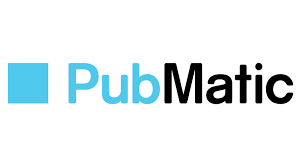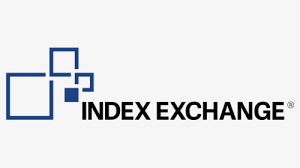AdSense vs SSPs
When it comes to monetizing your website, you might be wondering whether to use AdSense or SSPs like PubMatic, Index Exchange, etc. Both have their pros and cons, but which one is right for you? Let’s take a look at the key differences between Google AdSense and SSPs to help you make the best decision for your website.
Google AdSense Explained
As a starter Publisher, you can monetize your website with Google AdSense. The publisher installs a code snippet on their site & selects where they want the ads to appear, reducing the amount of manual input required. Ad placements, ad units of all ad sizes can be managed responsively with Google AdSense.
Once AdSense is active, advertisers bid on ad spaces based on the profile of that website’s audience. AdSense is able to pay publishers per impression/click by billing the advertiser after the ads are served. 99% of starter publishers go with Google AdSense first for website monetization as it easily delivers high-quality ads that sync with their content.
Pros & Cons on making money with Google AdSense
Google AdSense Benefits:
- The AdSense program is free and eligibility requirements are low. If you have multiple websites, you can easily run ads on all your websites with one AdSense account.
- There are various ads options, including several that can be tailored to fit your website’s theme and niche.
- Once you meet the $100 payout threshold, Google pays by direct deposit on a net30 basis.
Google AdSense Drawbacks:
- You can easily have your account terminated, and Google is not forgiving in case of violation of AdSense policies.
- To make money online, you need real human traffic.
- It pays less compared to ad operation partners.
- When it comes to blacklisting monetization, they are extremely strict.
- AdSense provides fewer in-depth insights than some other ad networks, so publishers can’t always figure out where they are earning money, making optimization more challenging.
When should Publishers stick to AdSense?
As Google AdSense pays per click, you should check your click-through rate (CTR). If your CTRs are over 1% and don’t fluctuate, Google AdSense can outperform header bidding. However, CTRs always fluctuate & the clicks on ads change dynamically, so you can lose out on ad revenue, Publishers who use SSPs don’t need to worry about this since they are paid based on impressions, and your ad revenue growth becomes more predictable & steady.
What are Supply-Side Platforms?
SSPs or supply-side platforms are an integral part of real-time bidding and publishers use these adtech platforms to show, manage & distribute their ad inventory. They are also referred to as yield-optimization platforms as they’ve become the main platform for publishers to optimize their yield and ad space to multiple DSPs. A publisher can supercharge their website’s ad revenue by allowing impressions to be seen by as many buyers as possible.
PubMatic
Publishers are able to use PubMatic’s customized platform-as-a-service (PaaS) to get the most from their proprietary solution hot out of the box. By driving 3X more ad revenue and simplifying header bidding with enterprise-level management tools, it also leverages the power of Prebid.js at the same time.
PubMatic SSP benefits:
- Provide buyers with premium audiences and inventory via private marketplace (PMP) offerings, while still maintaining total control.
- Increasing competition & yield by facilitating connections with the top DSPs across all channels during real-time bidding.
- With PubMatic’s Unified Ad Server, designed to help navigate the intricate programmatic ecosystem, discover the best performing ads across platforms, screens, and formats.
- Using PubMatic’s suite of ad quality tools, you can protect your inventory across ad formats in order to prevent low-quality ads that maybe impacting user experience.
Index Exchange
Index Exchange is a transparent and real-time global marketplace for premium digital media companies to sell their digital advertising impressions. By focusing on publishers’ needs, they’ve created a transparent ad exchange that gives publishers control over their content and pricing and comes with competitive optimization services.
Google Ad Manager
Google merged its DFP (Doubleclick for Publisher) ad server and AdX ad exchange into one offering called Google Ad Manager (GAM) for publishers some time ago. By prioritizing brand safety here, GAM is certified by the Trustworthy Accountability Group (TAG) to safeguard against ad fraud and malware.
Google AdExchange/AdX connects sellers and buyers throughout the programmatic ecosystem to build the world’s biggest real-time bidding (RTB) platform. By combining DFP and AdX, publishers can rotate between ad networks & sell their inventory directly to advertisers. This is why Google Ad Manager is the most popular SSP for publishers.
Publishers can manage all their ad sources in one place and grow their business using programmatic and data-driven decision-making with Google Ad Manager, which supports native, video, and custom ad formats.
Google Ad Manager comes with:
- Free usage upto 90 impressions per month
- Monthly pageviews requirements: 5 million monthly pageviews.
Here’s how you can easily access Google Ad Manager and AdX through MonetizeMore’s Google AdX program.
Google AdSense or SSPs. Publisher’s best bet?
Although they appear to be alternatives to Google AdSense, the majority of the Ad Operation platforms actually come offering Google AdSense.
Website Monetization depends on:
- Your site’s content and target audience.
- Your website’s traffic, specifically if it’s real traffic or bot traffic, and demographic location of your traffic.
- Site Viewability and eCPMS range.
- Website Speed.
Why switch from AdSense to Header Bidding?
1. Advertisers will love to pay more
First of all, advertisers need to plan their budgets based on monthly and quarterly targets-they’ll spend less in the beginning and more during the end of each quarter for ad impressions to see their ads served with budding traffic.
2. Traffic & ad inventory go hand in hand
As website traffic increases, premium advertisers begin to bid higher as publishers’ ad inventory becomes more enticing. The reason for competition between demand partners is that if there is no competition (in the case of AdSense), you’ll not receive the maximum revenue from selling your ad inventory with just AdSense.
3. Holidays & Events
Advertisers spend significantly more on ad inventory during Black Friday, Cyber Monday, and Christmas. CPMs usually rise for events like this. During the holiday season, users spend more time online, and ad refresh allows publishers to make more money through that. This cannot be accomplished with AdSense.
Using a Reliable Ad Operation Partner
Bigger SSPs like Rubicon & IndexExchange, typically refuse to work with smaller publishers requiring millions of page views before considering your application. You’ll also need several platforms to boost your ad revenue earnings since many platforms won’t bid on more than 30% of your inventory.
Finding a reliable and sustainable monetization partner is another alternative that many publishers are considering. Platforms like these know how to optimize ads and 3X that ad revenue. By adding publishers to their accounts, ad operation partners give publishers access to networks with higher qualification requirements.
The added benefit is that these platforms will manage the bidding process and ensure ad quality on your behalf. Some even offer invalid traffic solutions to help reduce revenue clawbacks.
source https://www.monetizemore.com/blog/publishers-best-bet-google-adsense-vs-ssps-copy/





0 Comments